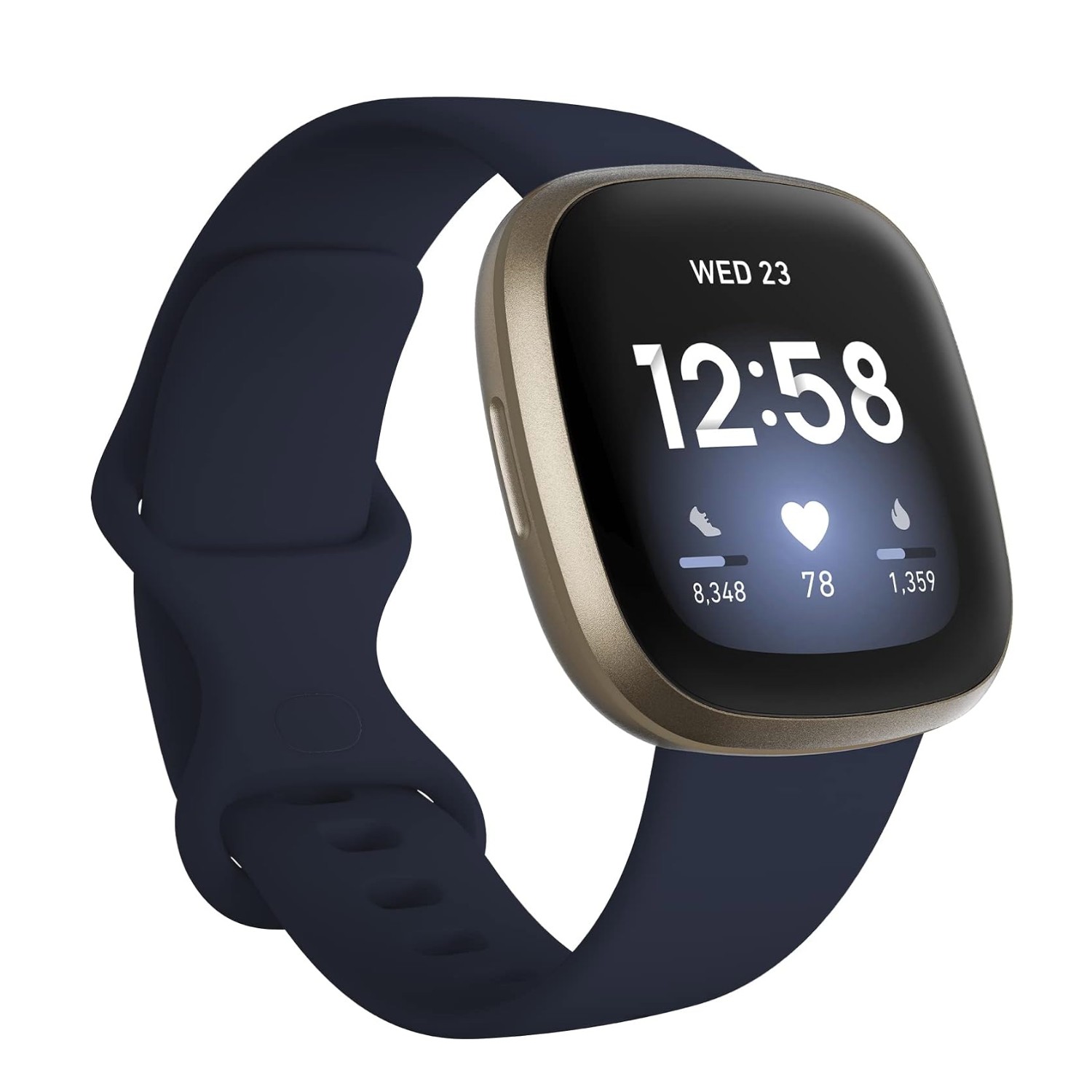Fitbit Versa 3 vs Versa 4: here's the one I recommend buying
There's little difference between these models, but the Versa 3 is much cheaper
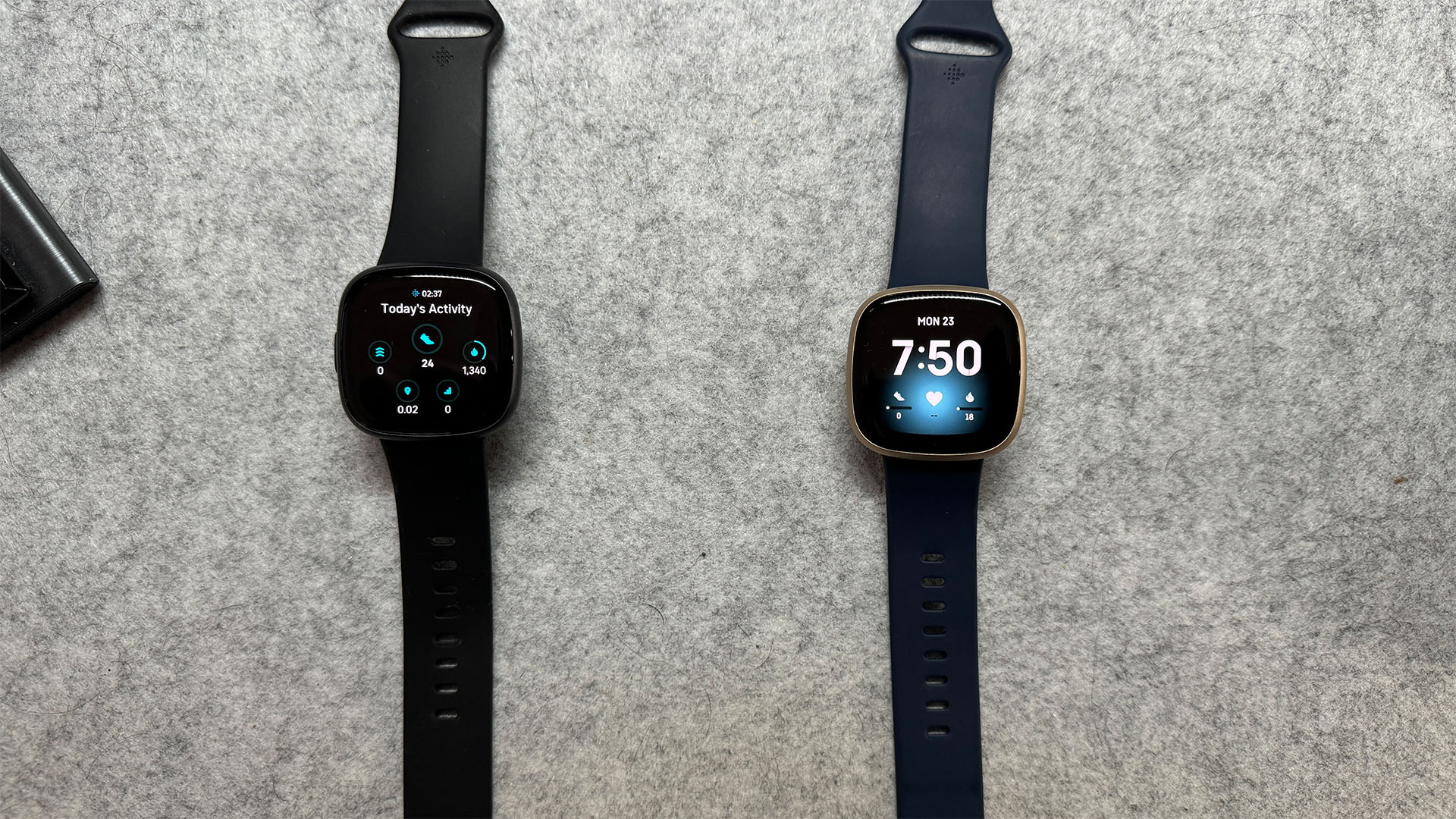

The Fitbit Versa 3 and Versa 4 are both part of the same range. As the number suggests, the Versa 4 is newer, but it doesn't offer loads of new features. It has some built-in workout options, a shiny new physical side button and some third-party apps like Google Pay—but there’s a little more to it than that
Fitbit doesn't produce the Versa 3 anymore, so it can be difficult to track down the model online. You can sometimes find second hand units for as little as $100, while the newer Versa 4 retails for around $200.
Given that there's little difference between the models, I'd recommend going for the cheaper option if you can find it at a good price, but bear in mind that you might miss out on new software updates.

The Versa 4 offers incremental improvements over the Versa 3 with a physical side button and support for Google Pay. Otherwise, its features are broadly the same.
Pros
- Has a physical side button
- More workout options
Cons
- Pricier
- No EDA scans, unlike similarly priced models
- Battery life could be better
Price
The Fitbit Versa 3 arrived in September 2020, meaning it’s more than three years old at the time of writing. I’ve used it on and off since then, and have also seen its price plummet to around $100 second hand—a great deal if you don’t mind the older hardware.
It originally launched at $230/£199.99, the same price the Versa 4 arrived at in September 2022. I’ve seen the newer model discounted to $150/£150 pretty regularly, and it might drop even lower in the Fitbit Black Friday sales.
Health tracking features
The Fitbit Versa 3 and Versa 4 have the same basic health features. Both offer blood oxygen monitoring, automatic heart rate tracking, and the usual step and calorie counters.
The watches will automatically start tracking a workout or run when they notice you've been moving for a while, recording the session then giving you a detailed breakdown of your heartrate. However, the accuracy of this is questionable—I found that neither watch recorded exertion spikes during workouts.
Start your week with achievable workout ideas, health tips and wellbeing advice in your inbox.
You can also manually start tracking a workout on the watches, which is useful if you're outdoors and want to get a detailed breakdown of your run. The in-built GPS means that you can get a mini-map of your route.
Unfortunately, neither watch offers an EDA scan or ECG readings, which are offered by the slightly more expensive Sense 2 model. These can give you some insight into your stress levels and heart health—but you don't really need these features in a fitness tracker, unless you're particularly worried about these things.
So, broadly speaking, both watches offer the same features. The real differences lie in the sports tracking modes, which we’ll come to shortly.
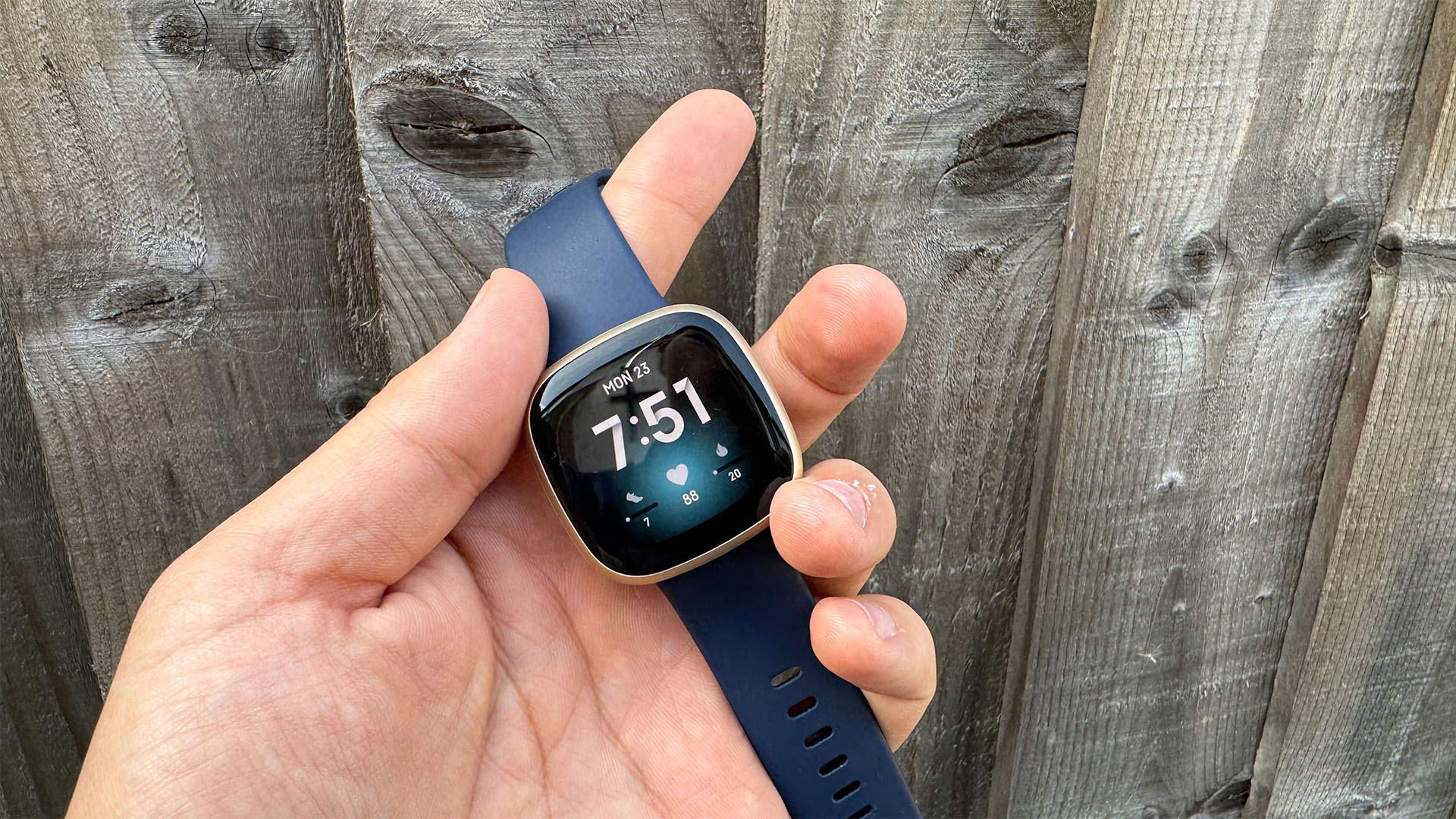
Fitbit Versa 3
Fitbit Premium
Fitbit Premium is a platform offering diet plans, mindfulness routines, workout plans and some additional insight into your recorded health data.
I’m not one to pore over diet plans, but I’ve found the mindfulness exercises and some of the guided workouts included to be worth the price of admission. The real killer feature is the Daily Readiness Score which tots up your rest, activity, sleep, and more, to give you an easy-to-read indicator of how much you can push yourself on any given day.
You can usually get six month's free access to the platform, after which it will cost $9.99/$7.99 per month
Sports tracking
Here’s where the Versa 4 starts to stretch its legs a bit (yes, that’s a running joke). The Versa 4 comes with 40 preinstalled workout profiles, whereas the Versa 3 tracks just 20 exercise types.
New additions for the Versa 4 include weightlifting and dancing, meaning if you want true tracking and metrics for those specific activities you’ll want to opt for the newer smartwatch. The Versa 3 has the basics covered, though, so if you just want to run, walk, cycle, or swim, you’ll be well catered for.
I’m a little less keen on the swimming functionality. The Versa 3 and 4 can both track the time spent swimming, but you’ll need to use the app to calculate lengths—not ideal when you’re in the zone. The physical button on the Versa 4's side makes it much, much easier to unlock the tracker with wet hands—something the Versa 3 doesn’t make easy with its touch-sensitive button.
Both the Versa 3 and Versa 4 include built-in GPS, so you can track your run without needing to bring your smartphone.
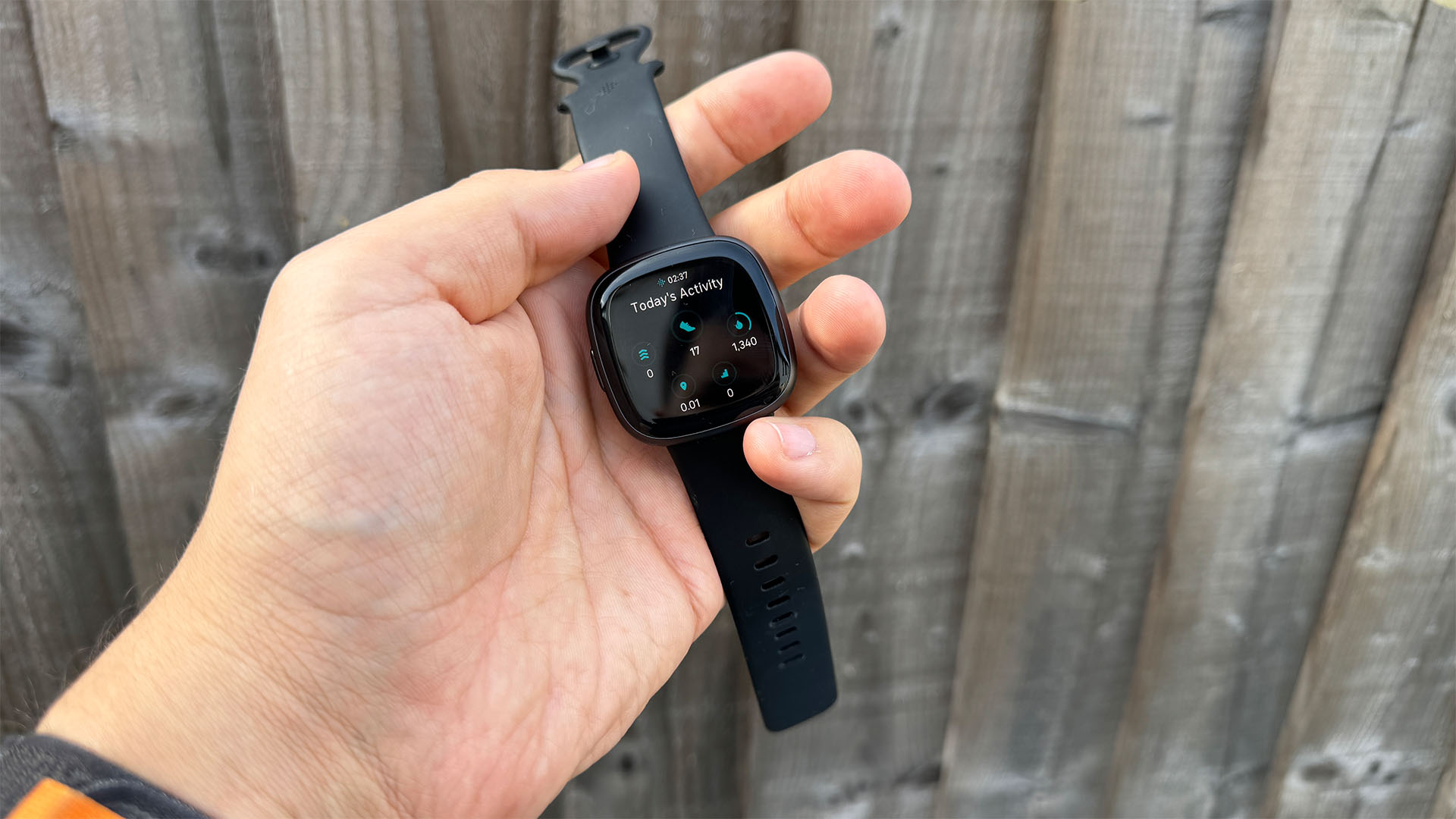
Fitbit Versa 4
Style and design
Both the Versa 3 and Versa 4 look identical at a glance, but there has been a very subtle slimming down with the newer model. It’s 1.2mm thinner, but heavier by 2g, but you're unlikely to notice either of those changes.
As touched on previously, the biggest upgrade here is the side button, which is easier to use when you're in the middle of a sweaty workout or when you're swimming.
Thankfully, both models share the same excellent AMOLED display with a rounded-square design that looks great and is easy to read in pretty much all lighting conditions.
Smartwatch features
The Versa 3 is a fantastic fitness tracker, but it’s tough to consider it a smartwatch in the truest sense of the word. It lacks any option to install third-party apps, and while Google now owns Fitbit, it’s been hesitant to add features like Google Pay to the Versa 3.
That functionality is on the Versa 4, as well as Google Maps. It doesn’t have Google Assistant, but I was able to use Amazon’s Alexa AI on my wrist.
You can connect to your phone too, meaning you can skip tracks when listening to music and triage notifications.

Fitbit Versa 4 being used on card reader
Battery life
Both Fitbit Versa models reached six days of battery life for me, with their larger, colorful displays draining the battery faster than the slimmer, monochrome Fitbits that can last for weeks on a charge.
This is still miles better than Apple Watch or Samsung Galaxy Watch’s one-to-two-day battery life.
Final verdict
The choice between the Fitbit Versa 3 and Versa 4 will most likely come down to price. I’d argue that the Versa 3, if you can get it at a discount, is still an excellent fitness tracker even three years on.
If they were priced the same, though, I’d opt for the Versa 4. It’s a little slimmer, a little smarter, and with double the workout profiles there’s more of a chance to try something new.
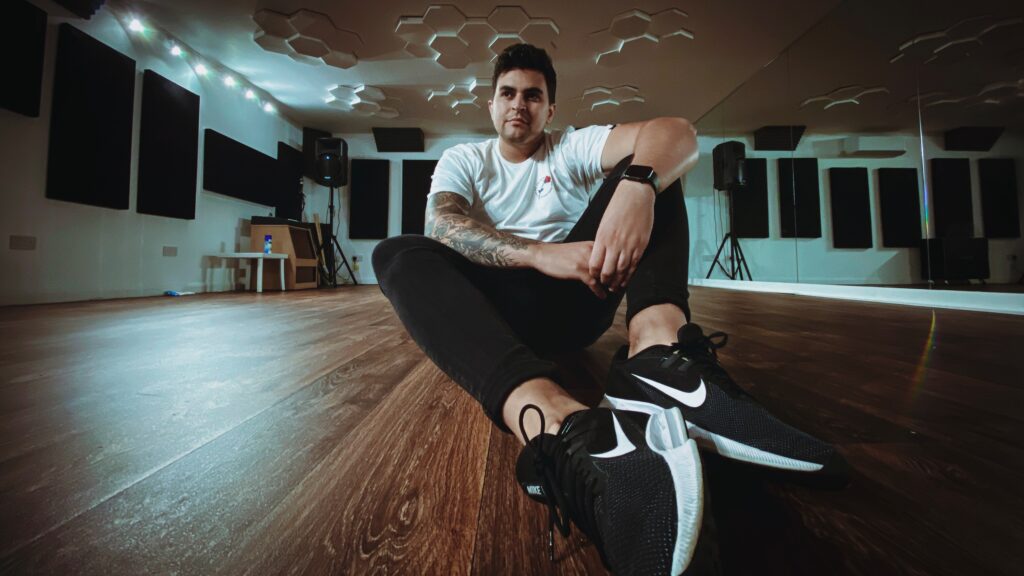
Lloyd Coombes is a freelance technology and fitness writer and reviewer for Fit&Well, with bylines at other Future publications, including Live Science, TopTenReviews, Space.com, and TechRadar. He regularly tests out the latest gadgets, including fitness trackers, headphones, and gaming accessories. When he's not reviewing hardware, Lloyd writes about video games at Dexerto.com.
